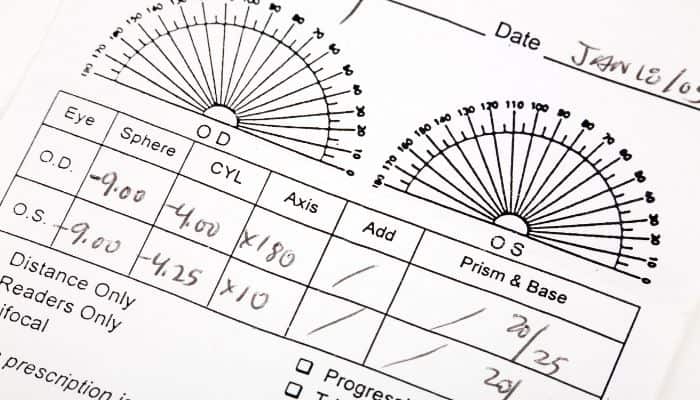What is “Sphere” (SPH) on a Glasses Prescription?

When you receive a glasses prescription from your eye doctor, it contains various abbreviations and numbers.
One of these is the “Sphere” (SPH) value, which indicates the strength of the lens needed to correct your distance vision.
This value, measured in diopters (D), can be either positive (+) or negative (-).
Positive vs. Negative Sphere Values

- Positive (+) value: Indicates farsightedness, meaning you have difficulty seeing objects up close clearly.
- Example: A prescription with a value of “+1.50 D” means you’re farsighted and require a lens with +1.50 diopters to focus properly on close objects. The further the value is from zero, the more severe your farsightedness is.
- Negative (-) value: Indicates nearsightedness, meaning you have difficulty seeing objects far away clearly.
- Example: A prescription with a value of “-3.00 D” means you’re nearsighted and require a lens with a power of +3.00 diopters to correct your vision, enabling you to focus properly on distant objects. Again, the higher the value, the more pronounced your nearsightedness is.
How To Read Your Eyeglass Prescription
What Does an SPH Value of Zero Mean?
An SPH value of zero in an eyeglass prescription signifies emmetropia, or having “normal” vision, meaning you have no refractive error or prescription correction needed. However, it’s important to note that:
- A zero SPH value doesn’t mean your eyes are entirely problem-free.
- You may still have other vision issues that require correction, such as astigmatism or presbyopia.
- You may still need glasses or contact lenses for reading or working on a computer.
Why Do SPH Values Differ Between Eyes?

It’s not uncommon for there to be a difference in SPH values between your eyes. Common reasons include:
- Differences in the shape or length of your eyeballs, causing one eye to be more nearsighted or farsighted than the other.
- Differences in how your eyes work together or how your brain processes visual information.
Having different SPH values for each eye isn’t necessarily a cause for concern, especially if the difference is relatively small.
However, if the difference is significant, you may require different lenses for each eye to achieve optimal vision correction. Your eye doctor can help determine the best course of action based on your individual needs and visual acuity.